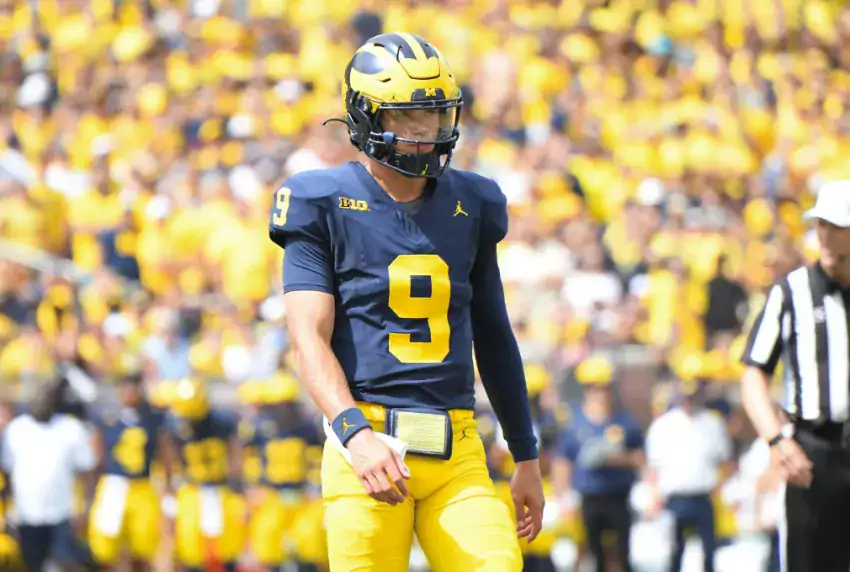
Neck Sharpies: What's McCarthy Seeing?

TAILGATE NOTE: We've been putting out conflicting information on the tailgate with the Sklars this Saturday at Venue. Here's where I finally get it right:
- It starts at 12:30 PM (not 11AM).
- Venue will have food and drinks and parking for purchase. They have parking for $50 until it fills up.
- The Sklars are performing live at the Ann Arbor Comedy Showcase that night and Friday. You should go.
- Anyone can come to the tailgate, but if you aren't seeing the Sklars live this weekend you have to give us a hot take in the hot take voice.
----------------------------
This game wasn't terribly interesting from an X's and O's standpoint. ECU was going to run blitz every play while Michigan was content to defeat it with play-action every other play. Without their HC and OC, Michigan kept mostly to their power run game, sprinkling in some zone late to deal with the opponent's decision to focus everything on stopping interior runs. What stood out the most—to you and me and everyone who watched this game—was JJ McCarthy's performance.
To a degree, you could argue his job was relatively simple this week. With the pirate linebackers and most of their safeties committed to the run, the few guys left in coverage were mostly hung out to dry.
There's no subtlety to this. We've been playing for almost a quarter, and when McCarthy turns around ECU has nine guys playing the run and JJ has two dudes heading into all the space.
[After THE JUMP: Advantage: McCarthy.]
LEVERAGE
The reason Cover Zero makes a quarterback's eyes go gaga is because of a this. Leverage in a coverage context basically means advantage. For a receiver it's does he have room to run away from a DB to get the pass. If you're a receiver on the right, and the cornerback covering you is behind you and to your right, he has leverage in that direction, and you have leverage on him to anything inside. If there's a safety hanging around in the middle of the field, however, he has you leveraged there.
It's easiest understood in Cover 1, which is basically man coverage with help inside.
Let's say you are the X receiver here. That cornerback is leveraging you up and outside because if you turn inside there's a zone defender to help. If you do turn outside and upfield not only can he impede you a bit, but once you're free of him he can trail you, taking leverage upfield and inside, and using the sideline for outside leverage. In our play above, the CB on the left is staying high and outside, knowing the Weakside LB and then the Free Safety will be there to help inside. The Nickel is doing the same on the H, and the other CB is doing the same to the Z receiver's post route. Our SS covering the Y's corner route flipped once they got near the sideline because that's now his help.
If you're saying "How can the WLB and the FS be the help for all of these routes?" you're understanding the basic reason that pro passing games are so successful. No defense can cover all directions all receivers go unless they have twice as many defenders in coverage as the offense has targets in the pattern. If the WLB drops all the way back to take intercept the X receiver's dig route, the H now has leverage inside the Nickel for a quick slant. If the WLB walls off the H's slant instead, the FS ends up caught between the X's dig and the Z's post.
The QB's job is to read the help, see who's out-leveraged, and deliver an accurate pass that takes advantage of the leverage before the help can react or the trail defender can make up the ground. The receivers' job is to use that leverage to create space for the pass. This is why receiver speed, and QB decision-making, arm strength, mechanics, and accuracy are so highly valued: These all maximize the advantages of leverage.
Blitzing, disguising, varying zones—all of it is about this simple game: Which receiver has leverage, how much, and how much does he need for the quarterback to get him the ball? A great cornerback is one who can win when he doesn't have leverage. A great receiver is one who can consistently maximize the value of his leverage (Roman Wilson), win passes without it (Keon Coleman) or ideally, do both (Nico Collins). A great play makes it easy for the QB to find leverage, creates a lot of it for the receiver, and generates a matchup that is advantageous to the offense. Here's an example of all three at work on Saturday:
Michigan created an easy read for McCarthy with a good ol' fashioned Flood concept, which gives him a Deep, Midrange, and Flat option on the field side. ECU has three defenders for three threats, but not enough leverage. The cornerback can either take away the deep route or the midrange. The SAM can drop under the midrange route, but that would leave Donovan Edwards free underneath. McCarthy watches the CB stay with Karmello English on the deep route and fires an out to Colston Loveland at the midrange.
With that outside leverage, Loveland is able to create separation, giving McCarthy extra time to loft the pass where Loveland and only Loveland can get to it. The tiny cornerback uses that time to come down, but all he can do is tackle on the catch. The SAM used that time to drop back but all he can is watch.
At the far right you can see English running away from the free safety. Had this cornerback covered Loveland, McCarthy would have seen English with leverage to the corner and fired downfield to hit English before the CB could drop back or the FS could catch up. A quarterback without his arm strength might not attempt such a throw, however. A lot of college offenses run this with tighter splits, narrowing the passing windows to keep the deep option viable.
SIMPLIFYING LEVERAGE
Defenses that know they'll be facing a pro-caliber quarterback will usually adjust by leaving more defenders in zone coverage, and varying zones. For a quarterback, a big part of the game is finding your leverage, so the less of it you leave out there and the harder you make it to find is all time you give your pass rush to make the routes moot. To varying degrees, defenses will often try to surprise QBs (Michigan's defense does this a lot) by having him think he sees a leverage advantage only to have a defender show up to take it away.
The other approach is to raise the pressure so the QB's receivers don't have time to get into their routes. The five-man pressure that ECU used above was designed to overwhelm Michigan's OTs while dropping all three linebackers into short zones to take away McCarthy's quick outlets. If they get him rolling out, any threats to the boundary side of the play should be nullified, lest the QB throw across his body. Most of ECU's approach in this game however was about stopping the run. Linebackers and safeties activated at the first sign of a handoff. Nailing them with play-action didn't matter; whenever Michigan got a 1st down from play-action, they ran the next play, and ECU blitzed right into it.
ECU's third and long strategy was just as blitzy. Identifying Michigan's receivers as the weakest part of the offense, the Pirates left a lot of leverage opportunities out there to increase their chances of getting to McCarthy before he could take advantage of it. They also identified Colston Loveland as Michigan's most likely target in must-pass opportunities. Michigan had this self-scouted, however, and used it to gain even more leverage for their downfield passing game on this play.
Clearly Cornelius Johnson (not Karmello English, Peacock spotter) had a lot of leverage to make this catch. How they created so much space for him to run away from his coverage is a lot more interesting. It started with a check that McCarthy made before the snap. Here he points at Loveland, who stands up and moves himself in towards the formation.
What did JJ see? Well here's ECU's setup before Loveland moves in:
This looks like a kind of Cover Zero with a five- to seven-man pressure underneath. What McCarthy's noticed is that ECU only has one guy per receiver on the right side, meaning if there is a guy from that group who's dropping deep it's probably one of the dudes on the left side planning to double-team Loveland. McCarthy checks Loveland into a protection role, and sure enough the OLB on the top was charged with keeping outside leverage on Loveland with help from the SS on the top of the screen.
As JJ collects the snap, sure enough, the Pirates are blitzing the backfield like Spartans into the transfer portal.
All that is except the DE who's dancing around with Loveland, and the safety who's a little surprised that Loveland isn't out in a pattern. The safety waits a few extra beats to be sure, then looks up Roman Wilson and joins the field safety in a cone (double-team). Wilson's leverage is taken away.
And that's all McCarthy needs to see. Since everybody's blitzing and the safeties have declared their responsibilities, the other two defenders are without help. JJ backs up and slides away from the overload to buy himself an extra second, then throws to the open grass that Cornelius Johnson was allowed to run into because his cornerback was out-leveraged to the inside and upfield.
Three receivers versus four defenders seems like it would be an advantage for the defense, but counterintuitively, it's a better ratio than than four-on-five because there are fewer ways the defense can surprise you. Even with Roman Wilson doubled, Cornelius Johnson with a move on a cornerback who's responsible for all of that vertical space is a good matchup. Karmello English on a deep seam would be another one just in case Johnson can't shake free, though with so many blitzers coming the protection isn't going to last.
On replay you can see how confident JJ is in his decision. He set the protection, anticipated where the pressure was coming from, checked his favorite target into blocking because he correctly diagnosed the defense's response, and knew where to find Johnson with plenty of space. Watch his eyes through this as they find the boundary safety (#15) leaving the spot where he could provide help, then finds the free safety (#4) staying with Wilson as well. That accounts for one half of ECU's coverage, so unless English is wide-wide open (or in the wrong spot), Johnson should be crossing with a panicky cornerback in tow any second.
Honestly, that was so accurate CJ probably could have caught it and kept running if he wasn't more concerned with securing a 3rd & long pass.
Arguably, McCarthy was already seeing it this well at the end of last year. Illinois, Ohio State, TCU, and now ECU came in with gameplans to throw everything they had at Michigan's backfield, and force them to throw the ball all over the yard against man coverage. The Pirates didn't have the secondary talent of an Illinois or TCU, but McCarthy's progress in finding where these defenses left him leverage is evident. This doesn't mean he's ready to pick apart a great switch zone team, but it does show he's more capable than ever of punishing a defense that wants to key on the run game. If UNLV wants to get in the way of our Corum-fest next week, they'll get the same.
September 5th, 2023 at 3:19 PM ^

"... I see open receivers."
September 5th, 2023 at 4:00 PM ^
Bruce Willis was an open receiver the whole time.
September 5th, 2023 at 10:31 PM ^
He just didn't realize it, so he never had a ball thrown his way.
September 6th, 2023 at 11:00 AM ^
I figured that movie out in the first few minutes and wasn't understanding the hype.
September 5th, 2023 at 4:01 PM ^
Michigan's receivers: more leverage than the Psychlos in Battlefield Earth.
I haven't read Battlefield Earth. I don't recommend the movie -- it's abysmal. I do, however, recommend the RiffTrax. Because you, too, must hear John Travolta go on about leverage. :)
September 5th, 2023 at 4:11 PM ^
I’ve read the book. It’s bad in an entertaining way. But yes, there is much ranting about leverage from Terl.
September 5th, 2023 at 4:50 PM ^
I read Battlefield Earth ~20+ years ago (long before I was aware of Scientology and the author's connection to it)... it was a decent sci-fi book. Not a "classic" by any means, but interesting. Heard that the movie was horrible and never tried to watch it.
(I did watch Ender's Game ~25 years after reading the book... was just ok, but butchered some aspects).
September 5th, 2023 at 5:13 PM ^
I watched Ender's Game before I listened to the audiobook.
September 6th, 2023 at 5:50 PM ^
I read BE closer to 40 years ago and was very disappointed. I thought it was poor science fiction (and poor science).
September 5th, 2023 at 8:22 PM ^
I enthusiastically and wholeheartedly recommend the movie — it’s abysmal.
September 5th, 2023 at 9:56 PM ^
Or as a previous boss of mine used to say, leeeverage.
September 6th, 2023 at 9:12 AM ^
Was your previous boss Captain Jack Sparrow?
September 5th, 2023 at 4:17 PM ^
Technically doesn't the CB on the Johnson play have inside, not outside, leverage on CJ before and initially during the play?
September 6th, 2023 at 9:33 AM ^
If it's Cover 0 (and the FS is on Wilson), yes, he should
September 5th, 2023 at 4:23 PM ^
- Anyone can come to the tailgate, but if you aren't seeing the Sklars live this weekend you have to give us a hot take in the hot take voice.
And provide a Dave Nasternak inspired power point explaining your hot take.
September 5th, 2023 at 7:15 PM ^
What I hear when Dave gives his hot takes.
September 5th, 2023 at 4:38 PM ^
"blitzing the backfield like Spartans into the transfer portal."
Har! Definitely struck me funny.
September 5th, 2023 at 4:43 PM ^
This is super informative -- thanks for putting it together, Seth! The most illuminating insight to me is that four defenders to three receivers is preferable to a five-to-four ratio. Seems like the basic idea is that there is more space in which to run open when there are fewer people in the secondary?
To that end, I wonder why Michigan doesn't run more play-action out of heavy sets when opponents are keying on the run, such as in the first play you diagrammed. The deliberate PI by the d-back saved a Wilson TD on that play. Such plays seem to be money against a defensive philosophy like ECU's. Why not do that twice as much?
September 5th, 2023 at 7:05 PM ^
"Why not do that twice as much?"
Welcome to Michigan Football!
September 5th, 2023 at 8:51 PM ^
"That worked out amazingly. Alright, put it away until the 4th quarter of the bowl game"
September 5th, 2023 at 8:26 PM ^
Seems like the basic idea is that there is more space in which to run open when there are fewer people in the secondary?
It’s not about space; it’s about complexity. With five DBs, the defense can engage in more tricksy shenanigans and give the QB more to process.
September 6th, 2023 at 5:11 AM ^
Eh, if you really think about it, both ideas are true.
September 6th, 2023 at 11:20 AM ^
because if you play action on every play, it's no longer a play action it's just a delayed pass. idk, it's like asking why doesn't the pitcher just throw a curveball every time since that pitch seems to be working ?
September 7th, 2023 at 11:43 AM ^
It's not about throwing a curveball every play. It's about the willingness to throw a curveball multiple times in a row because the hitter's sitting on fastballs. If you throw a fastball after every curve, and the hitter's still sitting on a fastball, you have to throw more curves.
September 5th, 2023 at 5:03 PM ^
Glad to see you posting again Seth. Just not the same without you. Hope all is well.
September 5th, 2023 at 5:23 PM ^
The tailgate starts at kickoff? That seems different.
Disregard, I was seeing the kickoff time in AZ time, not Eastern.
September 5th, 2023 at 6:49 PM ^
Thanks, very much enjoyed this a learned a lot.
September 5th, 2023 at 9:49 PM ^
This is great stuff, again.
September 5th, 2023 at 10:01 PM ^
On the "Flood to Loveland" play, do you think a good order of progressions would be:
- SS
- W
- FS
The best leverage I would see off the rip on that play would be the 10 route from Cornelius Johnson with all that space inside of him. So check that the strong safety isn't dropping, then check so make sure the WLB isn't dropping either. If either of them takes up that space, then your eyes would go to the FS.
On a similar note, I think I remember you doing a segment in past Neck Sharpies where you show what the offense is going to do but not the defense, then ask us to make our reads before you dissect what actually happens. That would be cool for any future JJ passing posts.
Thank you, as always, for taking the time to share this info with us. Great stuff!
September 6th, 2023 at 7:57 AM ^

I don't know his read progression against this. Probably FS, MLB, CB. You know it's a blitz so there isn't too much to look at except numbers. If the FS goes to the MoF you have pure man on the outside. If the MLB follows Loveland then CJ has leverage.
September 5th, 2023 at 11:24 PM ^
The second image from this article (smiley face McCarthy) was posted by "Kevin Usher" on the Facebook group "Maize & Blue Sports Fans". Not sure about the origin of the image or if there is any association between here and there, but thought the MGoAdmins would want to know.
September 6th, 2023 at 12:43 AM ^
That's cool that people are sharing it.
September 6th, 2023 at 6:15 AM ^
My eyes informed me, some time ago, that JJ has an elite ceiling. He demonstrated this for a full game on Saturday-from the pocket. And he could have run for 200+ yards if he would have chosen to-and adding that element to this game would have made this contest a "name that score" event. In the bigger picture there was no reason to hang 60 or 70 on ECU. Michigan made it into a very useful, tutorial scrimmage...and in the long run they will better for it.
September 6th, 2023 at 9:45 AM ^
We have yet to see him be deadly on long throws, but his ceiling is indeed high.
September 6th, 2023 at 11:13 AM ^
he was deadly last season, no reason to think he forgot how to throw the ball downfield.
September 6th, 2023 at 8:56 AM ^
This approach from Knowles and OSU last year famously "would have worked except for five plays." So where were the five plays in this game? We had plenty of chunk plays, but no passes of 25+ yards and only one run of 25+ yards (37 yd Corum run). Was the cover one safety cleaning everything up? It didn't feel like we took too many one on one deep shots either, other than PI to Roman Wilson. Definitely interested in the deep dive on this in UFR this week.
September 6th, 2023 at 11:15 AM ^
ohio just had a bunch of coverage breakdowns last year because their secondary wasn't well organized. ecu did a good job of keeping the ball in front of them, not many plays they just left someone open for no reason, even if they didn't have the talent to actually stop us. the Wilson PI call was pretty blatant, the guy knew he messed up and basically went for the "professional foul" as they call it in soccer.
September 6th, 2023 at 10:16 AM ^
Excellent article. I think this has filled some gaps in my understanding of how passing plays and coverages are designed to work.
September 6th, 2023 at 11:13 AM ^
Love these articles, never played football and I would guess this is high school level stuff, but breaking it down for us laypersons is super interesting to read.
September 6th, 2023 at 12:19 PM ^
He’s the one.
September 6th, 2023 at 2:00 PM ^
Neck Sharpies is amazing and one of the things that sets this site apart (and above) all others I've seen. For someone who never played organized football, they are always insightful!
What this article tells me is that we definitely have an offense that can execute well when the coaches out-scheme an opponent appropriately. If we continue to correctly scheme against what an opponent wants to do, we have no limits this season. So let's do that.
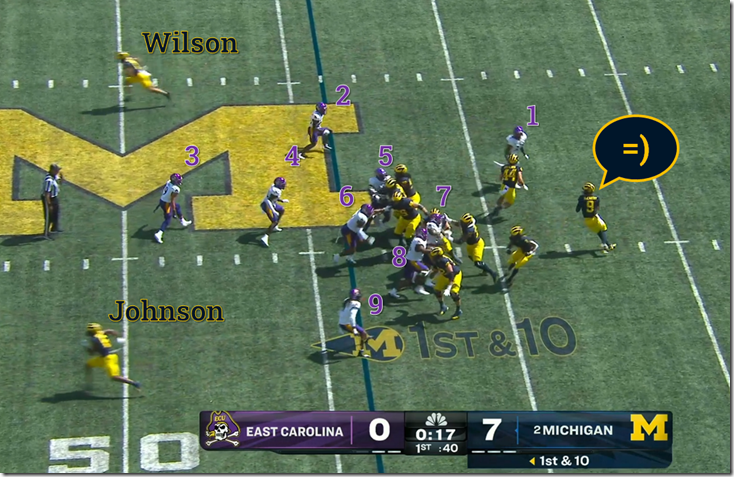
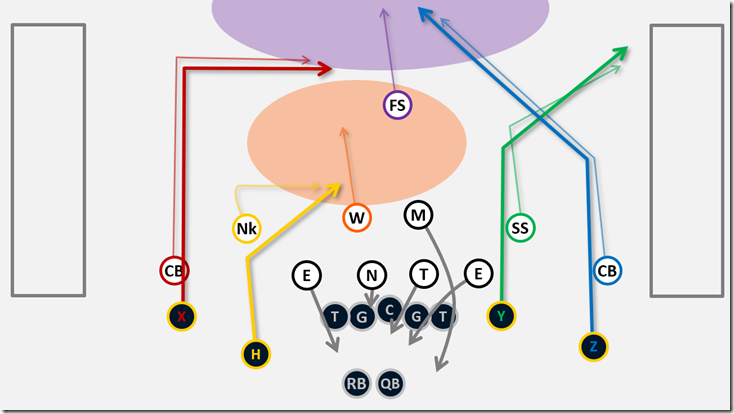
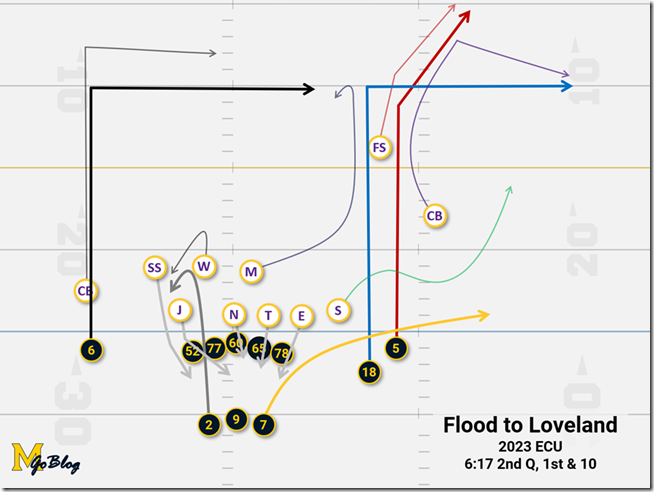
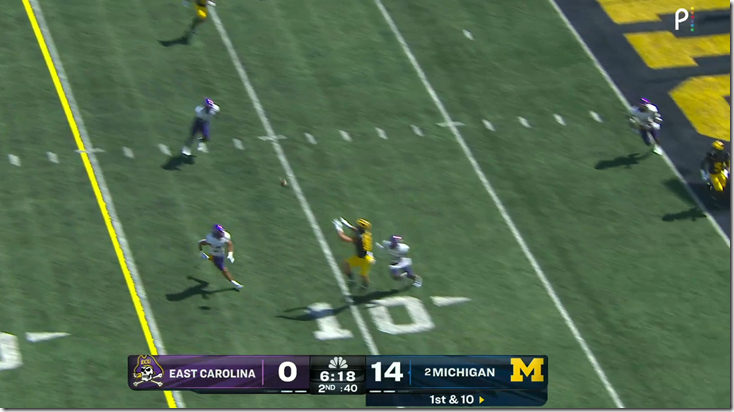
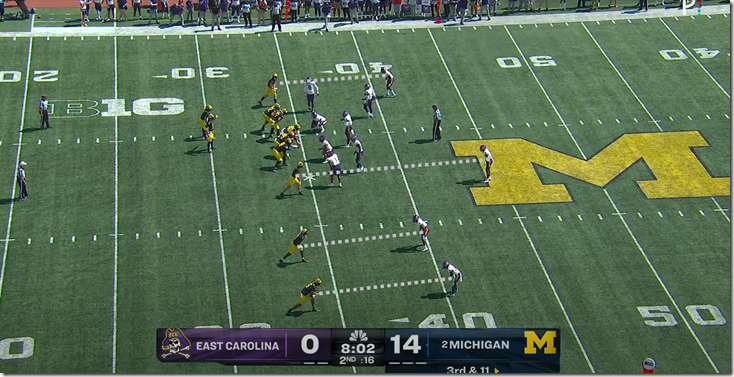
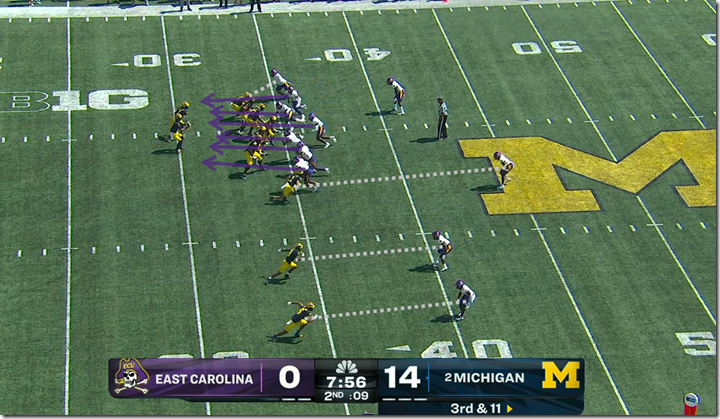
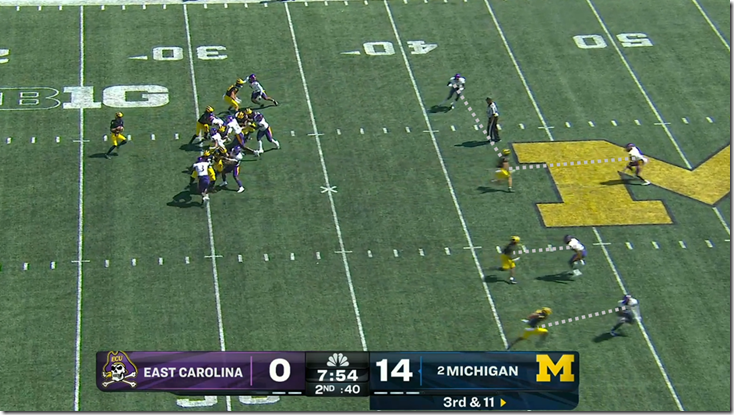
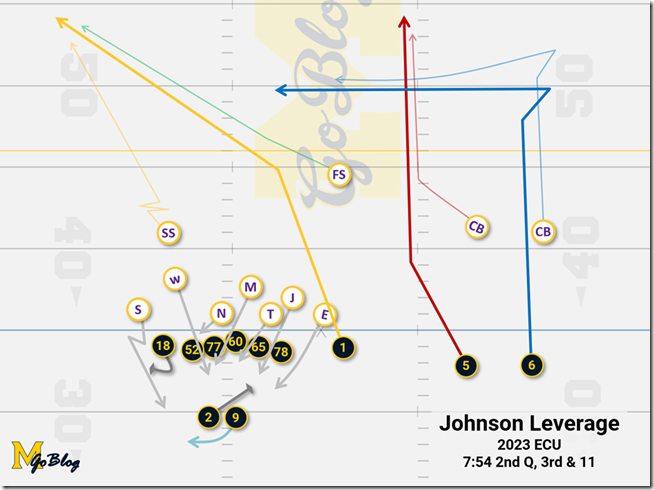
Comments